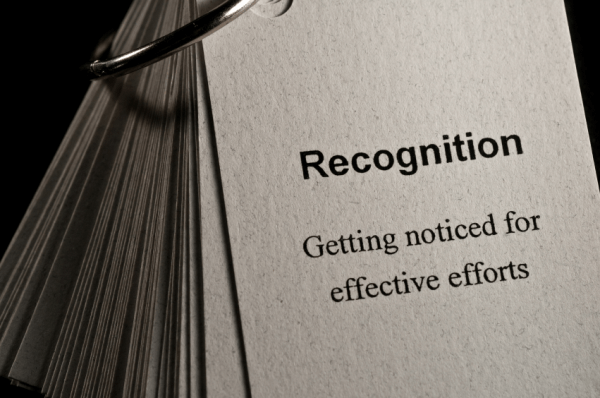The Ultimate Plan for Tackling Poor Employee Performance
 Addressing poor employee performance is probably one of the most stressful and least appealing aspects of being a leader. Not tackling a performance problem in its early stages is a pitfall that some managers fall into, for any number of reasons. I have heard countless reasons (excuses) why poor employee performance has been overlooked with the five most common being:
Addressing poor employee performance is probably one of the most stressful and least appealing aspects of being a leader. Not tackling a performance problem in its early stages is a pitfall that some managers fall into, for any number of reasons. I have heard countless reasons (excuses) why poor employee performance has been overlooked with the five most common being:
- Conflict Avoidance – Nobody likes to deliver bad news for fear of the reaction. Many leaders allow their desire for harmony and positivity to block them from tackling negative issues. Delivering feedback on poor employee performance rarely feels like you are giving someone a ‘gift’.
- Fear of a Lawsuit – Employees who hint at filing a charge of harassment or a lawsuit often use this as a defense to poor performance. Fear of legal action can be significant for some managers, especially in organizations with litigious cultures.
- Personal Problems – When employees have personal problems of which the manager is aware they often feel guilty and want to avoid upsetting the employee, despite the problems caused by poor performance.
- Morale Concerns – During times of change (i.e., downsizing, re-organization, mergers) leaders may fear confronting a low performer as it may cause unrest among the entire team. The reality is, when poor employee performance is not addressed, the morale of the team suffers.
- Need to Maintain FTEs/Headcount – With headcount numbers under constant scrutiny, leaders may be reluctant to terminate or chase away an employee so as not to lose the budget for that position.
The consequences of inaction should provide ample motivation for you to create and execute a plan of action. The dangers that stem from not taking action on poor employee performance are significant.
- The team is dragged down by lower productivity and diminished morale/engagement,
- Perceptions of preferential treatment being given to the poor performer,
- Loss of respect from the entire team and/or peers,
- A message is sent to the organization that poor performance is acceptable, and
- The performance deteriorates to the point that termination is necessary.
As I wrote in a previous article, Low Performers Fuel a Dangerous Downward Spiral, low performers have a direct impact on your organization’s ability to attract and retain talent.
Make Negative Feedback Constructive
While taking action may be difficult, it will be easier if done early and if managers apply sound practices in providing employee performance feedback. While both negative and constructive feedback are both aimed at highlighting performance or behavior that needs improvement, constructive performance feedback offers direction on how to improve performance. Negative feedback does not offer any advice on how to improve the negative aspects of the work that are problematic.
Research has shown that negative feedback can have adverse effects on future performance. Negative feedback can impact self-confidence and discourage one’s ability to put forth the effort to change. Neuroleadership research conducted by David Rock has also shown that negative feedback can restrict a person’s view of the situation and restrain creativity, which can greatly hamper a person’s ability to improve their performance.
Conversely, we also know from research that constructive feedback works and that employees want to receive feedback that will help them improve performance. The article, Awesome Performance Feedback in Employee Performance Management, offers helpful strategies for getting over feedback fears and biases, crafting helpful feedback, and building feedback into everyday leadership activity.
The way that feedback on low performance is delivered is critically important to facilitating behavioral change and performance improvement. Leaders should create a process that works for them and consistently use it. Once you have a system in place, the challenge of tackling performance issues in a timely manner will be much easier and less stressful.
7 Steps to Addressing Poor Employee Performance
Step 1: Prepare and Create a Plan
Collect the facts or data that support your assessment of the employee’s low performance. Outline the behavior that concerns you, along with specific examples (i.e., dates, deliverables, complaints). Next, outline the resulting implications of the poor performance on the team, yourself and the organization. Be prepared to explain to the individual how their behavior impacts others. Lastly, determine what action/s that you will take if performance does not improve, as well as the resources that you are able to offer to support the employee (i.e., training, coaching, additional feedback).
Step 2: Preserve Respect and Dignity
Showing respect for the employee and maintaining dignity is of upmost importance. Ensure that you hold the conversation in a private place and that you are free of distractions, including your ‘device’. Do not allow yourself to be interrupted. Express yourself in a direct and kind manner. While it may seem easier to ‘soften the blow’ or ‘sugar coat’ your feedback, doing so shows disrespect. You owe it to the employee as a leader to be clear and direct regarding the situation.
Step 3: Be Specific
Using your prepared documentation, be specific in describing the performance issue or problematic behavior. Describe the gap between current performance and what is required for successful performance. If the performance issue is behavior-related (e.g. lack of accountability), relate the behavior to the impact on job performance and link it to the organization’s competencies or values. Stay focused on job performance and avoid allowing your personal feelings to cloud your feedback.
Step 4: Explore and Acknowledge Their Perspective
Engage the employee by soliciting their input on the cause of the problem. Listen to their explanation; you may learn something new which may change your decision on next steps. Acknowledge their view of the situation, even if it does not align with your own to ensure that the employee feels that they have been heard. Again, keep the focus of the conversation on the performance issue.
Step 5: Collaboratively Problem Solve
Involve the employee in determining a solution to the problem and creating a performance improvement plan. Ask them to identify some possible options before offering your suggestions. Let them know that you want to work with them to address the issue and that you expect a positive outcome if you work together. Agree upon the action steps and then plan to follow up with documentation to ensure clear communication.
Step 6: Clarify Next Steps
As you prepare to close the conversation, articulate what the next steps will be going forward. Let them know that you will document the conversation and be clear with them on whether or not the issue results in a step in the disciplinary process (e.g., formal written warning). Lastly, check to be sure the employee understands the situation and the action steps. Ask them to summarize their understanding of the situation and describe their understanding of the agreed upon next steps.
Step 7: Document the Discussion and Plan of Action
The final set in addressing an employee performance issue is to document the discussion and the plan of action. Ideally, you use an online performance management system that allows you to track performance notes and modify development plans. If not, create a document that outlines the situation, the discussion, and the plan of action. Share this with the employee to be sure that they have a clear understanding of the performance issue and how they will be held accountable going forward. Read Performance Appraisals Made Easier with Accurate Performance Notes for more tips on documenting performance.
viaPeople's Performance Management system provides tools to help you track and document performance in real time, collaborate with your team members to create performance and development goals, and deliver comprehensive and motivating performance appraisals. Click here to learn more about launch a new performance management process within your company.
Photo Source: David Castillo Dominici via Freedigitalphotos.net
Share this
You May Also Like
These Related Stories

Awesome Performance Feedback in Employee Performance Management [INFOGRAPHIC]

You Rock! - 5 Ways to Transform Positive Performance Feedback



